-
Oregon Desert Palette
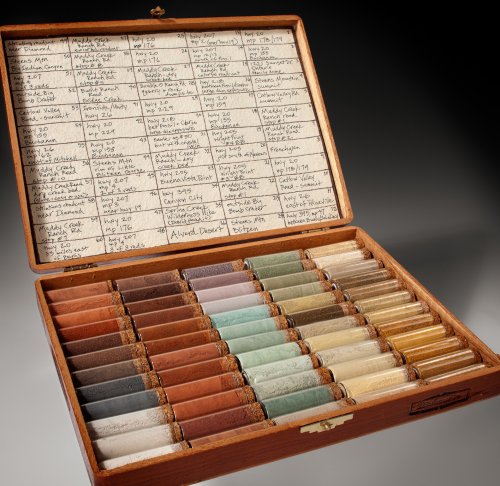
Reference library of sixty raw earth pigment colors collected in the high desert of southeastern Oregon, from 1997 to 2010.
Media: cigar box, re-used glass vials with corks, earth pigments collected in Oregon.
Box: 10 ¾” x 7” x 1”
-
Testing for Color
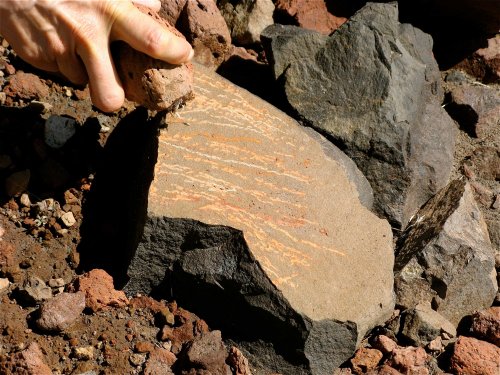
In the field when I find an appealing color of rock, I make a test by scratching it on a harder rock or on a metal file. If it yields little or no color, I leave it behind.The site is at the summit of Steens Mountain (approximately 10,000 feet) in Oregon's high desert.
-
Collecting Pigment
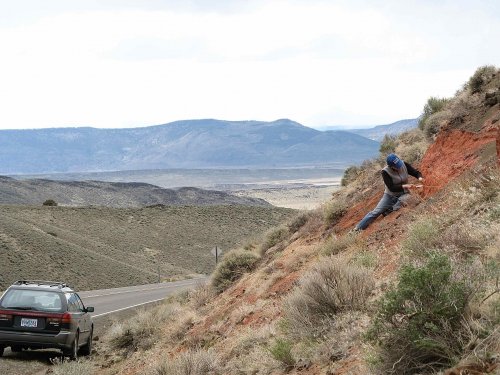
My focus is primarily on Oregon’s high desert, but I collect raw earth colors wherever I travel. This site is east of Adel, Oregon. I never collect in a national or state park, or any park for that matter.
-
Set of Colors
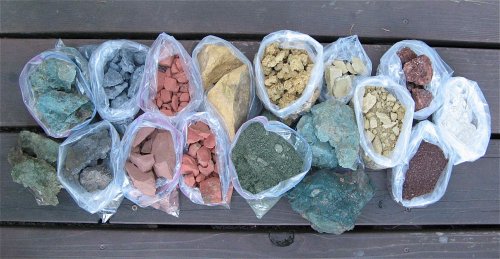
A group of colors collected during a road trip in Oregon's high desert.
-
Mortar & Pestle
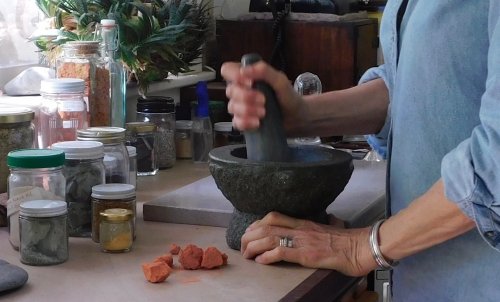
Back in the studio I use a stone mortar & pestle to break up the rock. If it is as soft as chalk, breaking it down takes no time at all.
-
Transferring Pigment
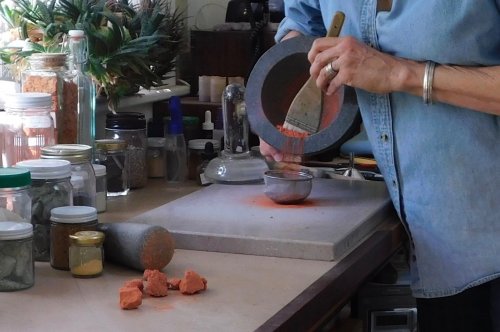
Transferring the roughly ground pigment from mortar into a fine screen sifter.
-
Sifting
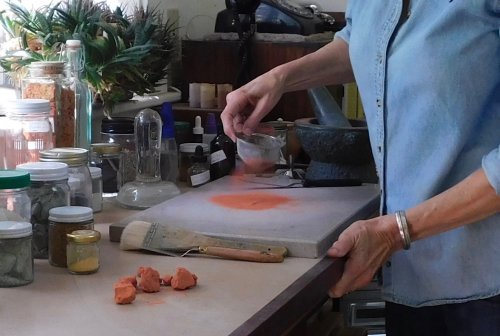
After the mortar & pestle, the pulverized rock is sifted onto a marble slab or piece of plate glass for mulling into a fine powder.
-
Water
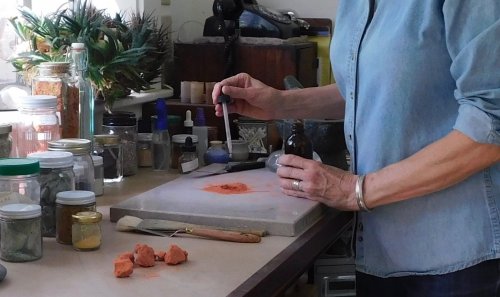
Distilled water is added by dropper to the sifted pigment.
-
Mixing Pigment & Water
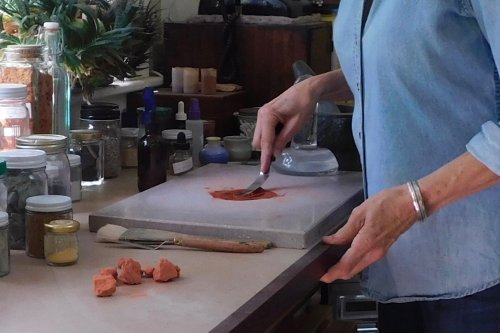
The powdered pigment and distilled water are mixed with a palette knife on a marble slab.
-
Mulling
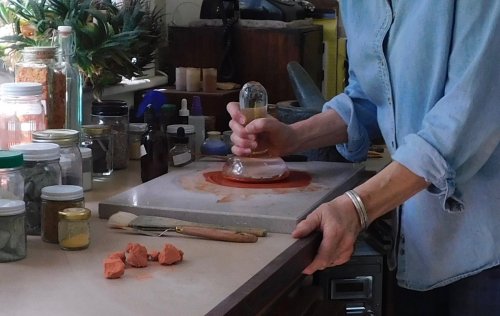
At this point the powdered pigment mixed with distilled water is ground using a glass muller until the particles are extremely fine, creating a smooth mixture. There is no set, recommended amount of time for mulling as various pigments have different qualities, some taking longer than others. From here, to make a water-based paint, add binder according to the type of paint desired, such as gum arabic (watercolor or guache), acrylic medium (acrylic paint) or egg (tempera). To improve the quality of the paint other ingredients are added based on recipes available online. (Oil paint is mulled with oil instead of water, not shown here.) The pulverized and mulled pigment without the addition of water can be used as loose pastel; pastel sticks can also be made.
